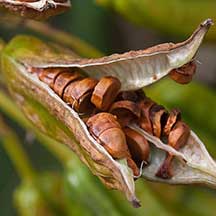 |
Previous Issues |
| Cedar Mill Community Website |
|
Search the Cedar Mill News: |
About The Cedar Mill News |
|
|||||||
| Volume 11, Issue 7 | July 2013 |
||||||
|
 |
| The seed pod contains disk-like seeds that can often be seen floating long distances in large mats in the fall and winter to new locations, spreading the invasion. |
Yellow flag iris is an excellent example of a plant that is benign, even beneficial, in its native habitat of Northern Europe, where harsh winters keep it in check, but is a worrisome nuisance when it travels abroad. Sadly, it can now be found cheaply through online distributors like Craigslist at low cost because it is so easy to cultivate. And in the time-honored tradition of sharing successful garden plants with your neighbors, people are literally giving it away! But when yellow flag iris escapes the confinement of the garden and makes its way into the open waterways of the Western US, trouble is not far behind.
In its native Scotland, yellow flag iris provides an important food source and nesting site for the endangered Corn Crake. However, here in Oregon, it crowds out higher quality native food sources such as sedges and rushes, which are important as forage for our native wildlife. In this way, it reduces the ability of wetlands to support domestic and migratory waterfowl. And unlike in its home climate, yellow flag iris has no trouble surviving the milder winters of the Pacific Northwest because of its unusual food storage system. Instead of storing sugars as starches in the root like other plants (think of potatoes and other starchy tubers), this energy is stored as fructan, allowing the plant to metabolize under very low oxygen conditions and protecting against freezing in the winter.
As it escapes urban gardens and ponds, yellow flag iris plant has migrated along stream corridors to invade riparian areas, open water features such a lakes and wetlands, and irrigation ditches. It can spread by both seed and rhizome. The seed pod contains disk-like seeds that can often be seen floating long distances in large mats in the fall and winter to new locations, spreading the invasion. This can result in severely restricted water flow in narrow channels like irrigation canals, stormwater basins and flood control ditches due to heavy clumping, negating any potential environmental benefits and thus eliminating it from the roster of restoration plants.
 |
| Yellow Flag Iris forms clumps in waterways that can impede water flow and wildlife |
Removal of yellow flag iris usually requires large excavation equipment or use of herbicides once the population has taken over. Moreover, removal may have to occur more than once since the plant may easily re-establish by rhizome fragments left over. As with most invasive species, catching yellow flag iris during its establishment before growth explodes is critical.
If you encounter this invader, you can take immediate action as well as report it. To remove the immediate culprit, pull plant the before it goes to seed, being sure to remove the entire root. All captured plants should be bagged and thrown into the municipal waste bin rather than composted or mulched in order to prevent re-sprouting.
Remember, you aren’t alone in the fight against invasive species. You can report sightings of yellow flag iris to the Oregon Invasive Species hotline at www.oregoninvasiveshotline.org. Or you can contact the Tualatin Soil and Water Conservation District to make your report by phone at 503-648-3174, extension 5. Not sure whether that really is yellow flag iris? Interested in learning more about your options? The Tualatin SWCD is committed to conserving, protecting, and enhancing the natural resources in the Tualatin River Watershed in Washington County. Their staff of resource and education professionals help landowners to identify local resource concerns and solutions, offering a wide variety of technical assistance and, in some cases, financial assistance as well.
![]()
Like us on Facebook for timely updates
Published monthly by Pioneer Marketing & Design
Publisher/Editor:Virginia Bruce
info@cedarmillnews.com
PO Box 91061
Portland, Oregon 97291
© 2013